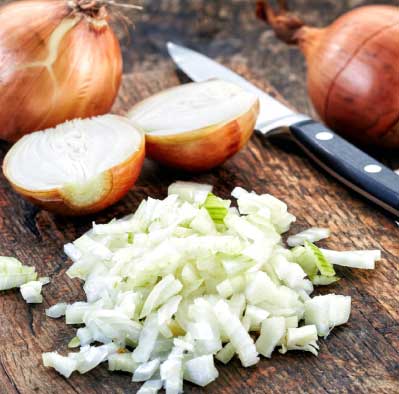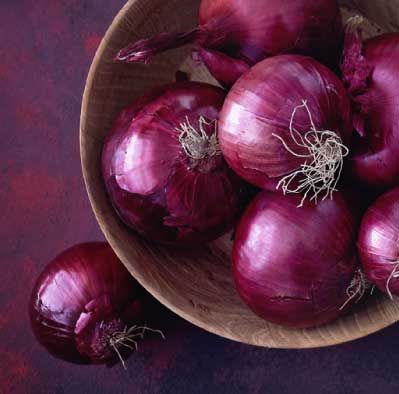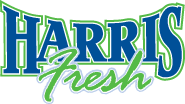
Featured Recipes
Enjoy these tantalizing recipes, selected from the menu of the world-famous Harris Ranch Inn & Restaurant. A legendary California landmark, the Harris Ranch Inn & Restaurant draws guests year-round who appreciate authentic western flavor and luxurious amenities. Experience a taste of Harris Ranch in every bite of these recipes.
• Sautéed Onions
• Slivered Garlic and Onions
• The Wedgie
• Steak in Enchilada Sauce
• Stuffed Flank Steak with Button Mushrooms and Caesar Salad
Favorite Onion Recipes
If you like onions, you’ll love these treasured recipes made with Harris Fresh onions. From sweet and tangy appetizers to hearty entrees – even desserts! – you’re sure to enjoy this selection of favorites, guaranteed to please every palate!
See More Soup & Salad Recipes
• Hot and Sour Vegetable Soup
• Hunan Turkey Salad
• Laredo Salad with Cowboy Marinated Onions
• Mediterranean Onion Soup
• Onion and Turkey Lime Salad
• Orange-Onion Salad with Dried Tomato Dressing
• Roasted Three Potato Salad
• Santa Fe Salad with Chile-Rubbed Grilled Ribeye Steak and Onions
• Vegetable Rice Soup
• Zydeco Gumbo

Cooking with Onions

What should I look for when purchasing onions?
When purchasing onions, look for dry outer skins free of spots or blemished. The onion should be heavy for its size with no scent.
How can I reduce tearing when cutting an onion?
Reduce tearing when cutting onions by first chilling the onions for 30 minutes. Cut off the top and peel the outer layers leaving the root end intact. (The root end has the largest concentration of sulphuric compounds that make your eyes tear.)
How do I remove the smell of onions from my hands?
Remove the smell of onions from your hands or cooking equipment by rubbing them with lemon juice (or salt, if the pots or pans are made of aluminum, cast iron, or carbon-steel).
Why do my onions taste bitter after sautéing?
High heat makes onions bitter. When sautéing onions, always use low or medium heat.
How can I cut the pungency of an onion?
When using yellow storage onions raw, to reduce pungency, sharpness and aftertaste, trim them and remove skin. Slice, chop or dice onion and drop into a bowl of ice water to stand for 1-1/2 hours before draining. If time is at a premium, chop, dice or finely slice onion and place in strainer or sieve. Run water through onions for at least a minute.
See More
How many cups will 1 medium onion yield?
One medium onion equals about 1 cup chopped onion.
Do the different colors of onions taste different?
Yellow onions are full-flavored and are a reliable standby for cooking almost anything. Yellow onions turn a rich, dark brown when cooked and give French Onion Soup its tangy sweet flavor. The red onion, with its wonderful color, is a good choice for fresh uses or in grilling and charbroiling. White onions are the traditional onion used in classic Mexican cuisine. They have a golden color and sweet flavor when sautéed.
Are onions healthy for you?
Onions not only provide flavor — they also provide health-promoting phytochemicals as well as nutrients. Research shows that onions may help guard against many chronic diseases. That’s probably because onions contain generous amounts of a flavonoid called quercetin. Other sources are tea and apples, but research shows that absorption of quercetin from onions is twice that from tea and more than three times that from apples. Studies have shown that quercetin protects against cataracts, cardiovascular disease, and cancer. In addition, onions contain a variety of other naturally occurring chemicals known as organosulfur compounds that have been linked to lowering blood pressure and cholesterol levels. Onions are low in calories yet add abundant flavor to a wide variety of foods.
How many calories are in onions?
With only 30 calories per serving, onions are sodium, fat, and cholesterol free, and provide dietary fiber, vitamin C, vitamin B6, potassium, and other key nutrients.
Onion Tips
Where should I store my onions?
Store your onions in a cool, dry, ventilated place – not in the refrigerator. Do not store whole onions in plastic bags. Lack of air movement reduces storage life. Chopped or sliced onions can be stored in a sealed container in your refrigerator for up to 7 days.
What do I need to know about canning onions?
According to the USDA, use onions of 1-inch diameter or less. Wash and peel onions. Cover onions with boiling water; bring to a boil. Boil 5 minutes. Pack the onions into hot jars, leaving 1-inch headspace. Add ½ tsp salt to pints; 1 tsp to quarts, if desired. Fill jars to within 1-inch from top with boiling water. Remove air bubbles. Wipe jar rims. Adjust lids and process.
Process in a Dial Gauge Pressure Canner at 11 pounds pressure OR in a Weighted Gauge Pressure Canner at 10 pounds pressure:
Pints or Quarts:40 minutes
NOTE: Sea level pressure is 10 pounds. Pressure has to be increased as altitude increases by ½ pound per 1000 feet.
Can you tell me how to dehydrate onions for cooking?
According to the USDA, to dehydrate onions you need to trim the bulb ends and remove the paper skins. Slice 1/8 to 1/4 inch thick. Onions may be cut into 3/8 to ½ inch dice, but will be slightly less pungent when dried. Dry at 160 degrees Fahrenheit for 1 to 2 hours and then 130 degrees until dry. To tell if they are dry they should feel like paper. Dried onions readily reabsorb moisture, causing deterioration during storage, so they need to be packaged in airtight containers and kept in the freezer.
How can I freeze my onions?
According to the USDA to freeze onions you need to wash, peel and chop onions. Water blanch 2-1/2 minutes; cool and drain. You may also freeze onions without blanching. Tray pack or day pack with headspace use in cooked products. Will keep 3 to 6 months.

